Imagine a subway system that doubles as an art gallery. The Stockholm Metro features over 150 artists who have transformed its stations into the world’s longest art gallery.
As you travel, you can enjoy stunning murals, sculptures, and installations that turn your daily commute into an artistic experience.
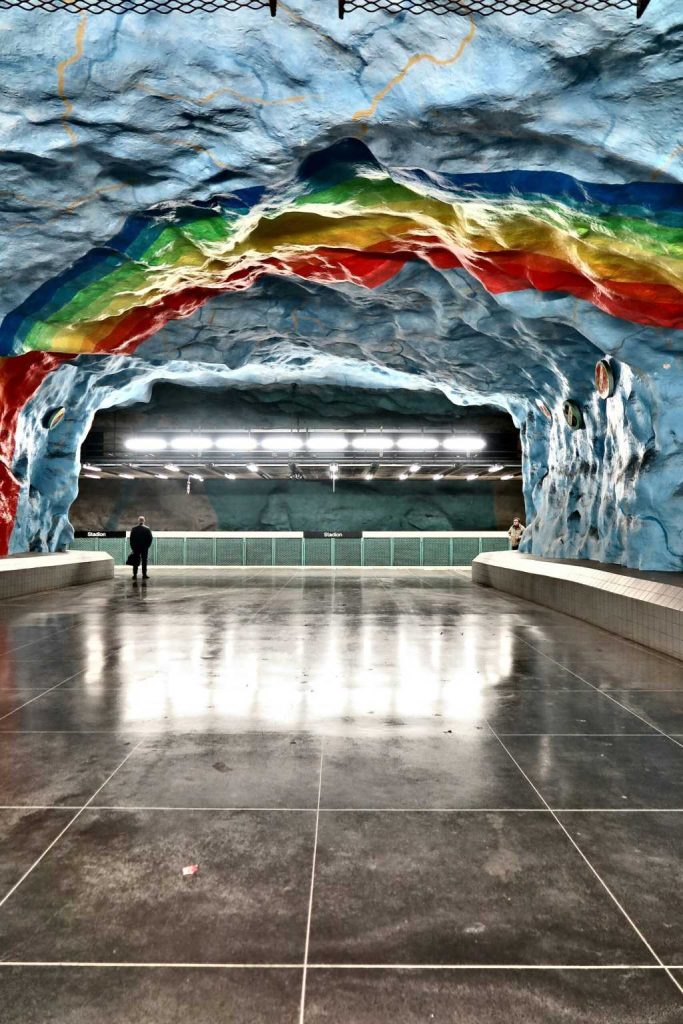
Every station tells a unique story, showcasing a blend of creativity and culture that reflects Stockholm’s vibrant character. You won’t just be getting from one place to another; you’ll be immersed in a colorful world that adds excitement to your travels.
Exploring the subway is more than just a means of transportation; it’s a chance to discover art in unexpected places.

The Essence of Stockholm Metro Art
The Stockholm Metro is much more than just a way to get around the city. It serves as an impressive art gallery, showcasing a wide variety of installations, paintings, and sculptures throughout its subway stations.

A Museum Underneath the City
Walking through the Stockholm Metro, you wander through a unique museum that is creatively hidden underground. With over 90 stations adorned with various forms of art, every bend and corner offers fresh surprises.
You’ll find colorful mosaics that tell stories of the city’s history. Many artists have transformed subway stations into vibrant spaces, using their talents to create visually stunning experiences.
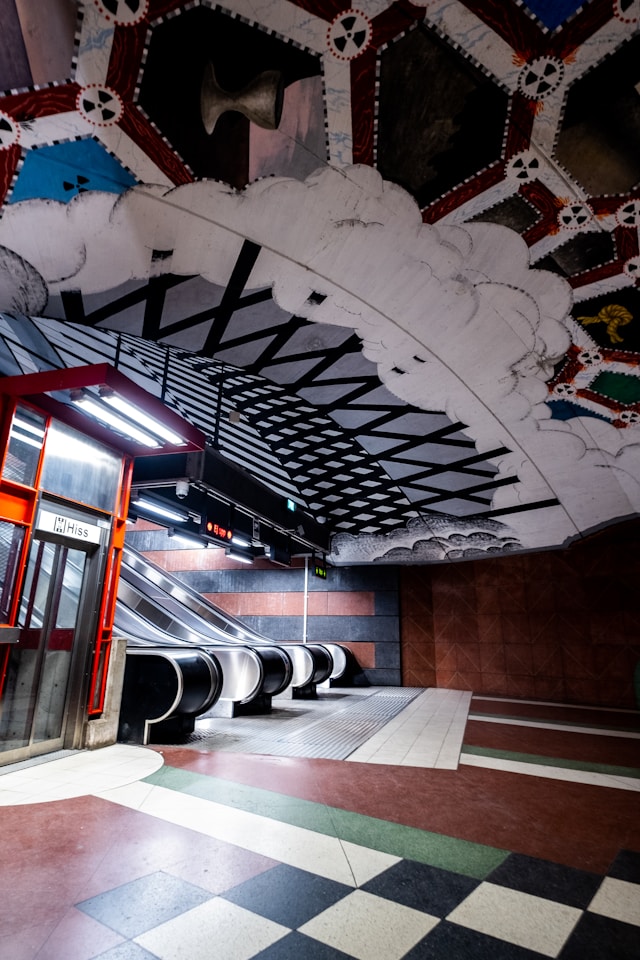
Each metro station feels like its own mini art gallery. Some prominently feature large installations, while others display smaller, more intimate pieces. This artistic approach invites you to appreciate everyday travel, making the commute much more enjoyable.
Celebrating Art and Design
Art in the Stockholm Metro highlights the connection between commuting and creativity. The system began embracing art in the late 1950s, making it a cultural landmark.

Artworks range from contemporary pieces to traditional designs, reflecting Sweden’s rich artistic heritage.
Imagine traveling through a space filled with sculptures that engage your senses with color and form. You may even spot intricately designed tile work that adds a touch of elegance.
The diversity of artwork ensures there is something for everyone. This blend of art and design not only beautifies your journey but also transforms how you experience urban life.
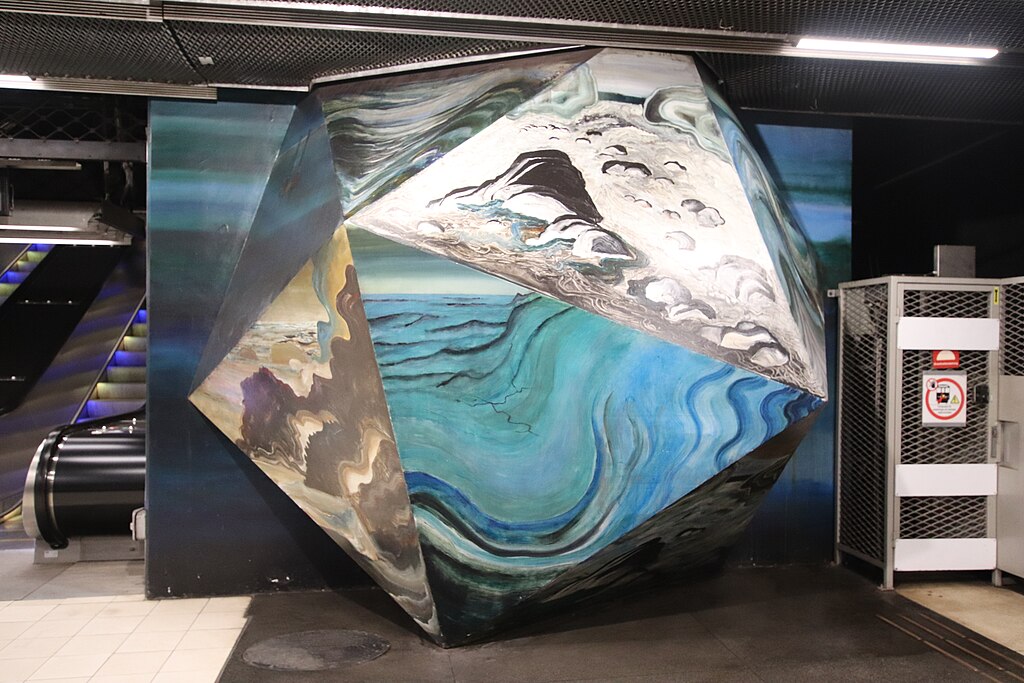
Historical Development
The Stockholm Metro is not just a transportation system; it is a remarkable showcase of art. Its evolution reflects a commitment to enhancing public spaces through artistic expression, making it the world’s longest art gallery.

The Inception of Art in Transit
The idea to incorporate art into the Stockholm Metro began in the late 1950s. The city aimed to celebrate its cultural identity during a time of growth.
In 1957, the first artist was commissioned to create works for the T-Centralen station. This marked the beginning of a unique blend of functionality and creativity in transit.

As the Metro expanded, more artists joined in. Over the years, more than 150 artists contributed to the tunnels and stations, each adding a piece of their vision.
Expansion of Artistic Horizons
As the Stockholm Metro grew, so did its artistic ambitions. By the 1970s, the art project included a wider range of styles and mediums.
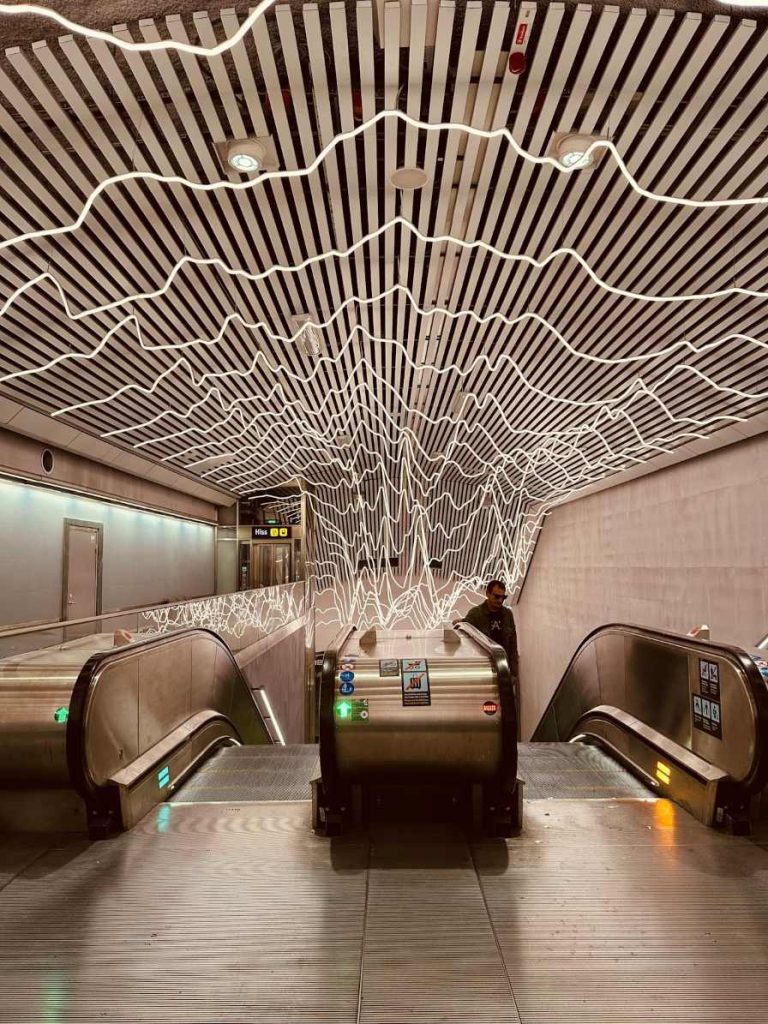
New stations showcased mosaics, paintings, sculptures, and installations. You can find famous works at stations like Stadion and Odenplan, which attract visitors and locals alike.
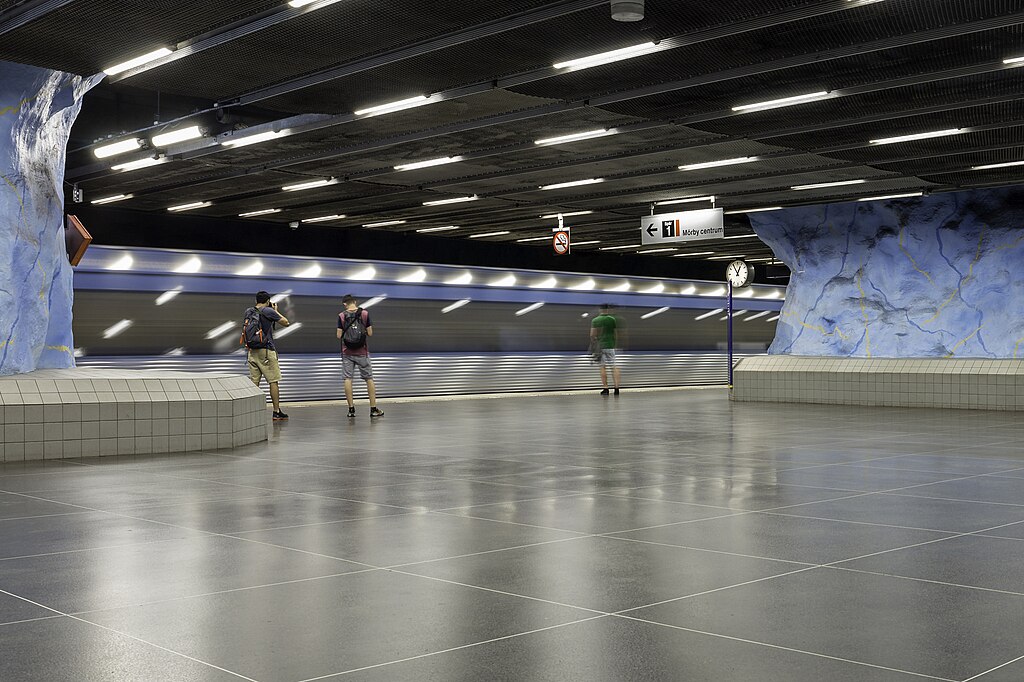
Today, with 94 of its 100 stations decorated, the Metro remains an evolving art gallery. Each ride through the system is like taking a journey through various artistic movements.
The integration of art not only beautifies the spaces but also makes public transit feel welcoming and engaging for everyone.
Iconic Stations and Artworks
The Stockholm Metro is home to several iconic stations filled with unique and captivating artworks. Each station tells a story, showcasing creativity and reflecting important themes. Here are some must-see stations and their standout pieces.
T-Centralen: The Artistic Hub
At T-Centralen, the heart of the Stockholm Metro, art takes center stage. This station features a stunning array of mosaics created by the artist Per Olof Ultvedt.
As you walk through the station, you’ll notice bright colors and intricate designs that represent Sweden’s natural beauty. The vibrant blue and yellow tiles highlight the connection between urban life and the environment.
Many visitors stop to marvel at the sculpture made from natural rock, adding an organic touch to this modern transport hub. T-Centralen serves as a gateway not only to the metro system but also to the art that surrounds you in every corner.
Stadion Station: A Colorful Exhibition
Stadion Station, located near the iconic Olympic Stadium, showcases a bold display of colors. Here, you’ll find murals that celebrate sports and the spirit of competition. The vibrant art represents the history and pride of the area, inviting you to explore its background.
The station features bright red and blue hues that create an energetic atmosphere. As you travel along the Red Line, take a moment to appreciate how the artwork enhances the experience of commuting. It’s a lively reminder of the city’s athletic legacy.
Solna Centrum: A Social Commentary Canvas
Solna Centrum Station showcases powerful artwork that addresses important social issues. This station features deep blue tunnels that symbolize deforestation and the impact of human activity on nature. The art communicates a message about women’s rights, using symbols and imagery to encourage conversation.
As you stroll through Solna Centrum, the contrast between the bold visuals and the natural rock surfaces creates a captivating experience. It encourages you to reflect on significant societal topics while navigating your daily commute. This station stands out as a thought-provoking space in the metro system.
Thematic Diversity and Artist Contributions
The art in the Stockholm Metro reflects a rich variety of themes and ideas. Artists explore environmental issues, social justice, and personal experiences. Through their works, they invite you to connect with important messages and narratives within the transit system.
Voices for the Environment and Society
Several artists use their platforms to raise awareness about pressing issues. For instance, you can see the impactful work of Siri Derkert. Her pieces promote women’s rights and environmental protection, particularly emphasizing the dangers of deforestation.
At Tensta Station, Takashi Naraha’s murals bring attention to social themes and community resilience. These artworks encourage you to think about societal changes and inspire action within your own community.
Personal and Collective Narratives
Artists like Anders Åberg contribute personal stories that resonate with many. His murals tell of everyday life, making you feel connected to the experiences of other commuters.
At Solna Centrum, the art provides a shared space for reflection. The vivid colors and intricate designs vividly express the collective identity of Stockholm’s people. You may feel a sense of belonging as you journey through this vibrant underground gallery.
Line by Line Artistic Journeys
As you explore the Stockholm Metro, you will discover unique artistic expressions along each line. The Blue, Red, and Green Lines each offer distinct themes that capture the essence of art in transit.
Blue Line: Depths of Creativity
The Blue Line is famous for its stunning mural-like designs. As you travel, you’ll encounter artwork that reflects themes of nature and culture.
One highlight is the Kungsträdgården station, adorned with beautiful blue hues that mimic the sea.
At Makalös Palace, murals showcase Swedish history and mythical figures. Each piece invites you to think deeper about the connection between art and environment. The Blue Line creates a journey not just through the city, but also through layers of creativity and imagination.
Red Line: Warm Hues, Bold Statements
On the Red Line, you experience bold and vibrant art. The Universitetet station stands out with large, colorful murals that express strong social messages. This blend of art and politics enhances your understanding of contemporary issues.
With pieces that use warm colors, the ambiance feels welcoming and engaging. The art encourages you to ponder societal themes while on your commute. The Red Line is a perfect blend of beauty and thought-provoking statements that make each ride unforgettable.
Green Line: Nature and Harmony
The Green Line embraces a theme of nature and serenity. As you travel towards Skarpnäck, the artwork seamlessly integrates organic patterns and earthy tones.
The stations are designed to evoke feelings of calmness and connection with the environment.
At Rådhuset, you will find murals that depict forests, rivers, and wildlife. This line serves as a reminder of the beauty surrounding you in Sweden. Each station is like a mini-exhibit, showcasing how art can promote harmony with nature.
Practical Information for Visitors
Exploring the Stockholm Metro art is a unique experience. You’ll find a mix of stunning artworks across various stations, making your journey as much about art as it is about transportation. Here’s what you need to know to enjoy your visit fully.
Touring the Gallery on Rails
To make the most of your visit, consider taking a planned route through the metro.
You can start at Tekniska Högskolan, where art begins to impress right at the entrance. Then, ride to Östermalmstorg to see captivating mosaics and sculptures.
Make sure to visit the stations in Tensta, Sundbyberg, and Solna Strand for more art displays. Each station tells a different story through its design and artwork.
You can easily hop on any train heading to these areas, and the system is user-friendly, with maps available throughout.
Accessibility and Station Services
The Stockholm Metro is designed to be accessible for all visitors. Many metro stations, including Tekniska Högskolan and Östermalmstorg, feature ramps and elevators for those with mobility challenges.
If you need assistance or have questions, staff members are available at most stations to help you navigate the system.
Many stations also provide information in English, making it easier for international visitors. Restrooms and seating areas are available at key stations, ensuring a comfortable journey as you explore the art.
The Future of Stockholm Metro Art
The future of art in the Stockholm Metro looks bright. More than 150 artists already showcase their work, and new additions are always welcome.
As the city grows, the metro system will likely expand. This means even more spaces for artists to express themselves.
You can expect to see fresh styles and ideas popping up in new stations over time.
Innovative projects are already in motion. For example, local schools and artists may collaborate to create student-made murals. This would make the art even more relatable to you as a visitor or commuter.
Sustainability is another important focus. Future installations may use eco-friendly materials or highlight environmental themes, connecting art to the wider world around you.
Interactive art could also be on the horizon. Imagine a station where you can engage with the art through technology! This kind of experience can make your journey even more enjoyable.
Moreover, community input is vital. The city may hold contests or surveys to see what themes resonate with residents. Your voice could help shape the next chapter of this vibrant underground gallery.
